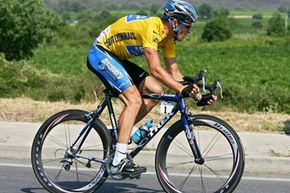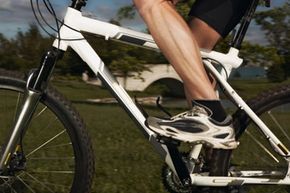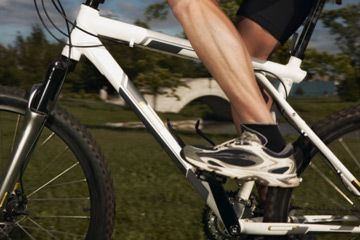Cyclists are only as good as their pedaling. That's because everything you do on a bike stems from how you pedal. How fast or how slow you do it, where you place your weight and at what angle you hold your feet, for example, all affect your ride. Pedaling also affects your power, acceleration, deceleration and balance, more so if you're riding a fixed-gear or racing bike.
Cycling quickly, you may pump your pedals 120 times a minute. All that repetitive motion builds momentum and propels you along. It's basic physics: Momentum, such as that from riding a bike, provides continuous power if you pedal at a consistent, steady pace. Changing pedaling speed or pedaling with an inconsistent method uses (and even wastes) more energy.
Advertisement
That's why it's a good idea for a serious bike rider or racer to learn energy-efficient and race-worthy tactics for pedaling effectively. It sounds simple, right? Just pedal harder. But there's much more to it than that, and there are many little movements and tricks involved in pedaling well. Where the foot sits, how it interacts with the bike pedal, how individual muscles naturally act and react, how individual muscles can be manipulated to gain speed and conserve energy: All of these things affect pedaling technique.
Legs aren't like the pistons of a car's internal combustion engine, furiously moving up and down repeatedly. Muscles can be trained and worked to create maximum energy efficiency, as well as to create a smooth, fluid (but elaborate) circular motion called full-stroke motion. By more effectively using the body's natural energy-consuming and energy-distribution tactics, among other tricks, you can reduce muscle strain and increase speed and endurance while providing more watts (units of energy) transferred from the body to the bike's back wheel, which propels the bike naturally.
Read on to explore full-stroke motion, and then we'll look at how the different types of bike pedals can give you that extra edge.
Advertisement




